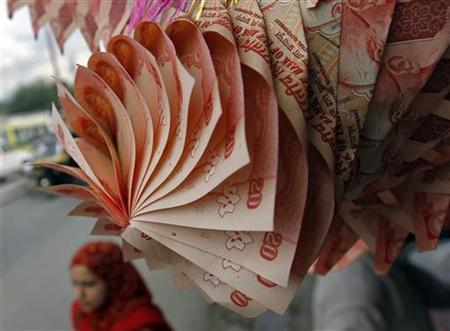Photographs: Illustration: Uttam Ghosh/Rediff Priya Nair in Mumbai
One should use PPF for accumulating retirement corpus and tax-free bonds for cash flow, notes Priya Nair
The season of tax-free bonds is on.
With companies like IRFC, IIFCL and NTPC still to launch their issues in this financial year, there would be many opportunities for ones who have missed out.
Retail investors, who have found little relief in the stock markets, want to get onto the bond bandwagon.
For a good reason, too, as the interest rates are at eight-nine per cent for a 10-year period.
But if you are already investing regularly in similar long-term instruments like public provident fund, don’t stop investing in them just because the rates on these instruments are higher marginally.
. . .
Why you must include PPF, tax-free bonds in portfolio
Photographs: Illustration: Uttam Ghosh/Rediff
While both these instruments seem to be competing for your surplus cash because of their long-term and tax-free advantages, they play different roles in your portfolio.
PPF allows you to prepare a retirement kitty whereas tax-free bonds ensure that you have a regular cash flow.
For a priority perspective, Sumeet Vaid, of Ffreedom Financial Planners, says that consider tax-free bonds only after exhausting the PPF limit.
“Tax-free bonds make sense if you are looking for cash flow.
“The annual or half-yearly dividend option is good.
“But there is no secondary market for these bonds.”
There are some major differences between the two.
PPF is limiting because you can invest only up to Rs 100,000 in a year whereas tax-free bonds allow up to Rs 10 lakh (Rs 1million).
. . .
Why you must include PPF, tax-free bonds in portfolio
Photographs: Illustration: Uttam Ghosh/Rediff
The lock-in periods are 15 year and 10 year, 15 year and 20 year for PPF and tax-free bonds.
In the former, there is partial withdrawal allowed after seven years.
While you can sell tax-free bonds in the secondary market, the absence of any depth would force you to sell for a discount.
The interest for PPF is announced every year. For the current financial year, that is, 2013-14 the rate is 8.7 per cent.
Of course, these are lower than bank fixed deposits, which offer 9-10 per cent for one year and above.
But since the interest income from such bonds is tax-free, the effective yield works out better than bank fixed deposits.
. . .
Why you must include PPF, tax-free bonds in portfolio
Photographs: Fayaz Kabli/Reuters
One must also remember that in case of PPF the amount invested is also tax-free, which is not the case with tax-free bonds.
Here is it only the interest income that is tax-free.
Another option is the tax-saving bank fixed deposits, which have a lock-in of five years.
Some banks offer these for a maturity of up to 10 years.
In this case too, the investment limit is Rs 100,000, which is exempt from tax.
But the interest earned is taxed.
Also, these are more attractive when interest rates are high, which is why they have been popular this year.
Investors can use PPF to accumulate the funds for retirement and tax-free bonds for a regular post-retirement income, says Nikhil Naik, managing director, Naik Wealth.
“We have seen that people keep renewing the money in their bank FDs.
Such people can consider putting some part of that money in tax-free bonds and keep a small part in FDs for the liquidity.
“Investors must remember that tax-free bonds offer opportunity at the moment,” he says.






article